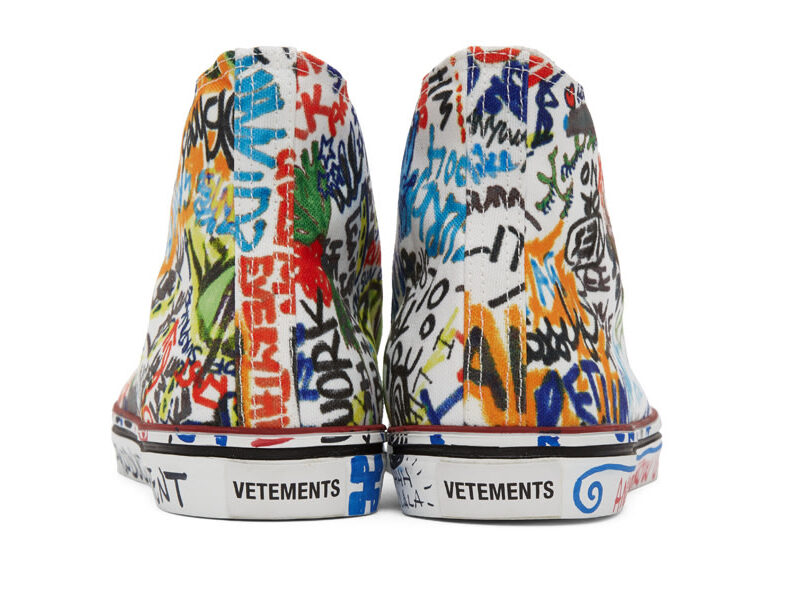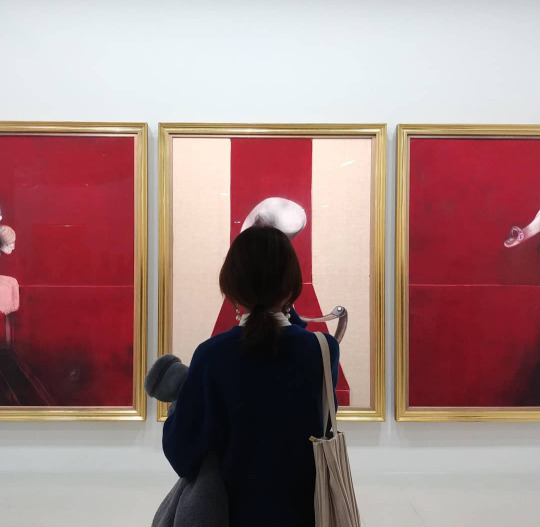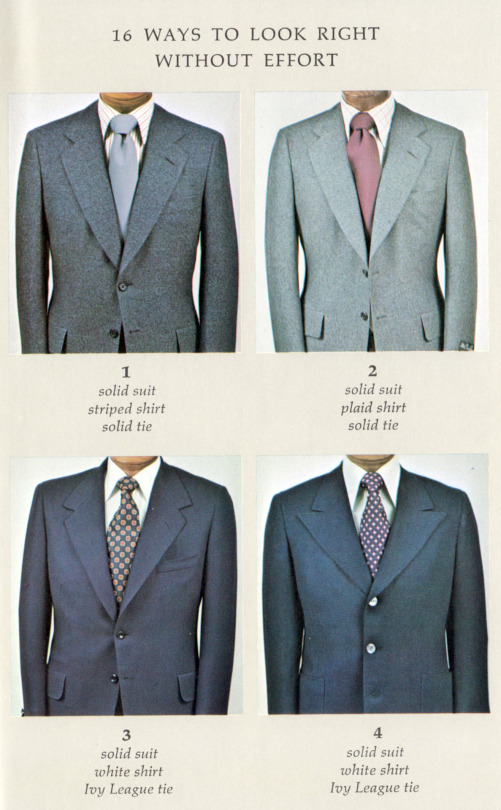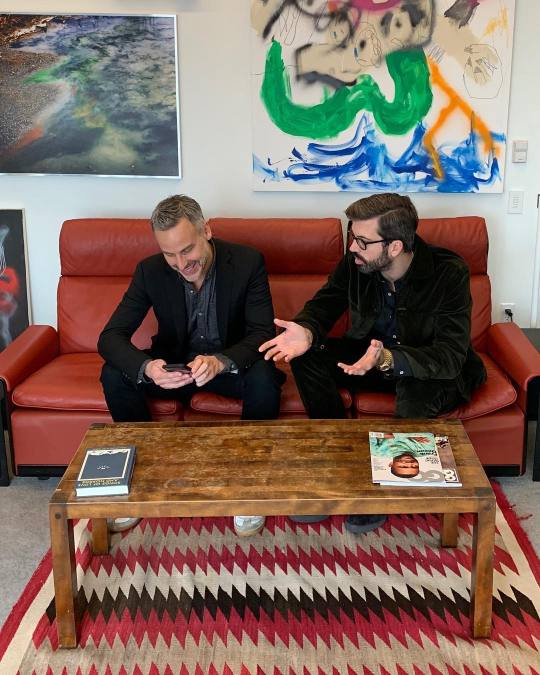
The end of the year always brings some reflection on what’s happened. The closing of this year, however, is special because it marks the end of a decade. So, this past week, I’ve been thinking about what are some of the biggest changes in fashion in the last ten years. Is it about the rise of specific trends, the emergence of certain subcultures, or something else? The more I think about it, the more I think this decade will be remembered not for its looks, but the ways in which we engage with clothing.
I often go back to this 2015 article by Cathy Horyn, where the then New York Times writer suggested that we may have entered a post-trend universe. That is, where fashion used to be cyclical — going from skinny jeans to baggy, and then back to skinny again — it’s now possible for many styles to coexist together. As she puts it, “there is no single trend that demands our attention, much less our allegiance, as so many options are available to us at once.” She credits this to social media, the ability of brands to create their own universe, and a greater acceptance for diversity in dress in general. An excerpt:
Throughout the 20th century, the way women dressed was governed by trends — from the hobble skirt of the 1910s, a Paris invention that spread to small cities and was ultimately sold by Sears, to Dior’s radical New Look of 1947, to the ’60s miniskirt. But for lots of reasons, mostly to do with economics and, inevitably, the Internet, the industry has moved away from that model. The last big trend that I can recall, one that started on the runway and exploded among mainstream manufacturers, was the hospital-green cargo pants that Nicolas Ghesquière made for Balenciaga. That was more than a decade ago.

Now, to look at the spring collections is to see broad categories based on distinct, vintage styles — the full-skirted ’50s dresses at Bottega Veneta and Michael Kors, among others; the ’60s mini-shifts and glossy surfaces shown at Carven, Louis Vuitton and Giambattista Valli’s younger line, Giamba; and the unbelievable amount of ’70s funk and color in shows like Gucci, Etro, and Derek Lam. I could go on. The fashions of every decade since World War II are represented in the new spring collections. That may sound like more revivalism — but the ability to find styles that actually suit one’s body and personality is cause for celebration, offering women so many more forms of self-expression. In the past, trends allowed every part of the fashion business to get a piece of the action. Department stores could sell their beloved “hot items,” magazines could assert their authority over readers and manufacturers could produce endless knock-offs. This might have been great for business, but less so for the consumer.
Horyn is mostly talking about womenswear, which is the bulk of the fashion industry. But at the time her article was published, I wondered if the same may be true of menswear. After all, men had just left their Americana/ Ivy/ workwear phase and were searching for something new. Italian tailoring was in its last days; streetwear was ascendant. I wasn’t sure if there was a dominant trend anymore.
The following year, I was sure: men are still very much about trends. Hedi Slimane had just rehashed a ‘90 heroin-rocker trope with his skin-tight jeans and black lambskin double riders. A year or so later, Raf Simons widened men’s silhouettes and made baggy cool again. Demna has also popularized a certain ironic normcore look (what I called fashion’s Spencer Gifts moment). And this past year, we’ve seen the rise of fleece, Blundstones, tracksuits, patchwork, ‘70s sleaze, and all things hikerdelic. Plus, everyone in Soho dresses like this now.
But the more I look back on the decade, the more I think Horyn is right in the important ways. Men’s fashion nowadays isn’t driven so much by social elites or magazine editors, but the chattering communities organized around particular aesthetics. As Antonio Ciognoli of 18 East recently said in a Failing Upwards podcast, “unless you’re Kanye West, it’s tough for any one person to move the needle.”

THE RISE OF ONLINE FASHION
Why do people join these online fashion communities at all? Why bother to argue over which are the coolest sneakers, what the right ways of wearing a sport coat, and the minutiae of garment construction? And why respond when someone posts anything? Unlike the hard sciences, there’s little truth in aesthetics. Things are beautiful to you, or they are not — so why bother trying to seek consensus?
Cultural critic Dave Hickey believes it’s because we’re good democrats who wish to be social. In a Fall 2002 issue of Daedalus, he posits that we speak and respond to the arts because we can, and because we live in a society where the Pursuit of Happiness is an officially sanctioned endeavor. “For Americans, the experience of beauty is necessarily inextricable from its optimal social consequence: membership in a happy coalition.”
Today, chatter about aesthetics flows naturally from experience. This contemporary street discourse is a direct descendent of those sixteenth-century Italians who were obsessed with the paragon, which is a touchstone used to judge the quality of gold. The paragon is the argumentative comparison, the taxonomic hierarchy, and the ranking of things like-to-like — one design to another, one artist to another, and one genre to another, and so forth. It’s how people figure out what is “the best.” This revolutionary way of talking about the arts took power away from the church and state and put it in the hands of everyday people.
During the Italian Renaissance, a loose coalition of artists, critics, and churchmen established what we now call the beaux-arts tradition by appropriating and willfully misconstruing sacred masterworks as objects of private desire. The beaux-arts, a French term corresponding to fine arts in English, generalized the concept of beauty for beauty’s sake (or art for art’s sake, and here fashion for fashion’s sake). “They created what Francis Haskell refers to as ‘a category of art for which only aesthetic quality need to be taken into account’ — which is not really a category of art at all but a categorical way of looking at art that privileges the quality of the object’s consequence over the authority of its causes,” Hickey explains. Over time, it became increasingly possible — even legitimate — for everyday people to subvert the official authority of clerics, bureaucrats, and academics who were assigned the difficult task of determining the “real” value, uncovering the “true” meaning, and enforcing the “correct” interpretation of art. “Being able to say ‘well isn’t that pretty’ is no small thing.”

Fashion has long been driven by the social tendency Georg Simmel wrote about in 1904. We dress in ways to signal our belonging to specific groups, as well as express our individuality within tribes. But the ongoing arguments about how to correctly dress takes its habits and conventions from that beaux-arts tradition that allows everyday people to engage in these discussions. And in doing so, allows them to use objects to represent their taste, shifting meaning and value from the supply side to the demand side.
While this shift has been a long time coming, it wasn’t until this last decade when it truly bloomed. In 1975, John Molloy built a career on the concept of power dressing. His book, Dress for Success, showed people how they could dress in ways that allowed them to climb social and professional ladders. Later, when office dress codes became more relaxed, men still turned to magazines such as Esquire and GQ for direction. By the late aughts, those magazines started to decline along with the rest of print media, but there were still leading blogs such as A Continuous Lean that helped shape the landscape of men’s style.
Today, there are no such authorities, let alone a dominant look. When the top brass at Goldman Sachs sent an email to employees earlier this year, telling them that they could shed their coat-and-tie, they gave little direction on how employees were supposed to dress. The management only said they want employees to dress in a manner that accords with the company’s and clients’ expectations (whatever that means). “We trust you will consistently exercise good judgment in this regard,” they wrote ominously. “All of us know what is and is not appropriate for the workplace.”
Most people have taken this newfound freedom to dress in ways that are comfortable and convenient. But others have used it to express themselves in more creative ways. More importantly, the decline of authority in fashion has allowed everyday people to engage with this topic in that beaux-arts tradition, organize themselves in non-exclusionary communities of desire, and “stay or go according to sublimated romance and the weather of the times.” Men have always been interested in clothing — the very definition of what Micheal Foucault calls an “open secret.” But rarely have Americans been able to talk about things they find beautiful, and talk about them all the time. This constant chatter is now spread online through microblogs, podcasts, forums, Twitter, Slack channels, Reddit, Facebook groups, and Instagram.

NEW DEMOCRACY IN FASHION
The original gatekeepers are now trying to catch up. In the opening salvo of his first issue as GQ’s Editor-in-Chief, Will Welch wrote: “Instead of dictating what’s good and bad from some sort of imaginary mountaintop, if we can meaningfully participate in a community of people […] helping to elevate and tell the stories people who we think are doing exciting things, to me that’s a higher calling than, ‘Don’t wear those pants, wear these pants.” The only way print media will survive in the new decade is if it helps amplify the discussions already happening online.
We started this decade in men’s fashion with a singular view on how to wear workwear, tailoring, and heritage-inspired ensembles. By the end of it, we still have trends, but our views are more open and accepting. This inclusivity and open-mindedness is cause for rejoicing, as it allows people to dress in ways that are richer and more meaningful to them. At its best, fashion is an expression of people’s very real lives and identities. It would be hard, if not impossible, to dismiss certain aesthetics without dismissing entire ways of living. The American Declaration of Independence opens with: “We hold these truths to be self-evident, that all men are created equal, that they are endowed by their Creator with certain unalienable Rights, that among these are Life, Liberty and the pursuit of Happiness.”
Historians read “the pursuit of happiness” as a Lockean euphemism for the protection of commerce and industry through contract law. But this is not dead language. The phrase also represents John Stuart Mill’s view of liberty, whereby people are allowed to organize themselves into communities of expression and experimentation. The panoply of aesthetics we see now in fashion is a reflection of Baudelaire’s dictum in the Salon of 1846, where he said that “there are as many kinds of beauty as there are habitual ways of seeking happiness.”
“Herein lie the pagan roots of the republic,” Hickey continues. “It is not surprising that a society whose citizens propose and elect a hierarchy of incarnate creatures to represent them in the realm of governance would propose and elect a hierarchy of similarly incarnate goods to represent their transient and variegated longings. It is hardly imaginable, in fact, that the citizens of a society like this, for whom the pursuit of happiness is a primal mandate, would not produce grails to embody the nature of their quest for it — inconceivable that icons of happiness would not proliferate.”

“Nothing is so conditional, let us say circumscribed, as our feeling for the beautiful. Anyone who tried to divorce it from a man’s pleasure in himself would find the ground give way beneath him.” —Nietzsche, Twilight of the Idols, 1889
This past decade will not be remembered for its trends, but rather the new ways in which we engage with clothing. We’ve reached an age where there’s a full kaleidoscope of possibilities in terms of appearance, and the ascendancy of one look doesn’t necessarily displace another. While there are trends, they’re filtered through very dispersed communities. Few things truly dominate. The rise of custom clothing has also taken exclusivity to an extreme, and very weird, point. It’s easier for people to differentiate themselves without the mania of trying to look au courant.
More importantly, as Nietsche would have it, our discussions about fashion are the ways in which we try to socialize our pleasure. People write about the clothes they like or dislike, accost strangers with their enthusiasm, and look for co-conspirators to agree with them. The maturation of online fashion culture has made it possible to mix and match things in ways that previously weren’t possible. It’s true that the internet has made fashion a bit more monoculture in some ways (there’s a particular look that’s popular in every global city). I also worry about the influence brands have in telling people what’s hot and not. But what an incredible time to witness the most democratic age in clothing. Fashion is now almost purely a discourse between engaged beholders, a colloquy of amateurs, and it need be nothing more.
